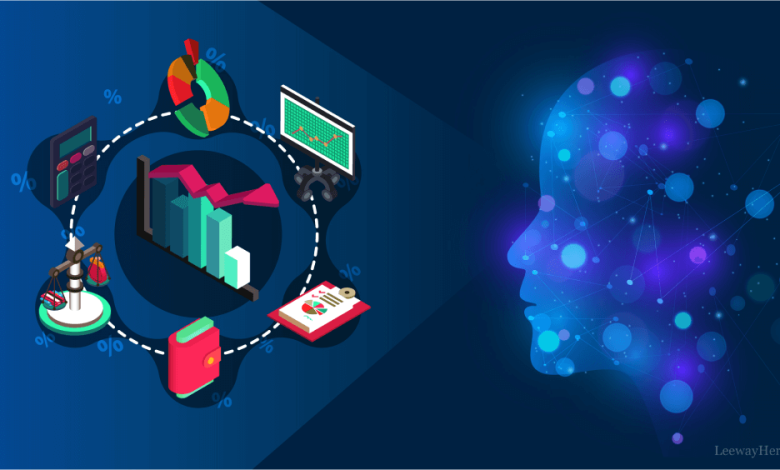
AI Journal invited Anastasia Glavatchi, an accomplished marketing professional with over a decade of international experience to contribute this expert perspective on how artificial intelligence is reshaping the client acquisition landscape. In this article, she explores the power of predictive marketing to transform data into foresight, driving sharper targeting, reduced acquisition costs, and lasting customer loyalty.
Introduction: The Rise of Predictive Marketing
Digital marketing is at the crossroads. Brands are on one side faced with an unprecedented deluge of information-clicks, buys, browse, social interaction. Consumers on the other expect one-to-one, instant, and context-aware interaction. The result? The need for smarter tools that can take raw data and convert it into valuable, predictive insights is paramount now.
This is where predictive marketing enters the equation. By applying artificial intelligence (AI) and machine learning (ML) to historical customer data, companies can forecast future behavior, enabling a marketing strategy that is not just defensive but offensive. My own experience with teams in deploying AI-powered campaigns draws a stark contrast: companies that use predictive analytics demonstrate sharper targeting, lower acquisition costs, and higher customer loyalty.
The question is no longer what is predictive marketing, but how fast can businesses integrate it to stay competitive?
What Is Predictive Marketing (and Why It Matters)
At its roots, predictive marketing depends on predictive analytics—a collection of methods that use statistical algorithms and ML models against historic data in an effort to forecast future outcomes. Important use cases are:
- Lead scoring: Identifying which prospects are most likely to convert.
- Churn prediction: Detecting customers at risk of leaving before they disengage.
- Product recommendations: Suggesting products based on prior behaviors.
- Customer lifetime value (CLV) modeling: Estimating the long-term value of clients.
This is far more than guesswork. According to McKinsey, organizations that use predictive analytics for customer acquisition can increase marketing ROI by 15–20% while also boosting sales efficiency.
Predictive marketing is a technical transformation and a cultural transformation in my experience. Staff must learn to trust the models, experiment with data-driven triggers, and embed AI insights into daily workflows. When done properly, it transforms acquisition from a shotgun endeavor into a science.
The Business Case: Tangible ROI from Predictive Marketing
The case for predictive marketing is compelling. Marketers using predictive analytics are nearly 3 times more likely to outperform the competition in revenue growth.
These numbers highlight a critical truth: predictive marketing doesn’t just improve efficiency—it changes the economics of client acquisition. Instead of spending blindly across channels, marketers can direct budgets to prospects with the highest potential return.
Real-World Case Studies in Predictive Marketing
American Express: Preventing Churn Before It Happens
Customer churn is one of the most expensive challenges in financial services. American Express applied predictive analytics to monitor how transactions were conducted, credits were utilized, and how engaged customers were. The system flagged customers in danger of leaving and then initiated some aimed retention efforts. By effectively utilizing tailored retention strategies, AmEx saved money that would have been spent in acquiring new clients as they were losing out on old clients.
Netflix: Retention at Billion-Dollar Scale
Netflix’s recommendation engine is perhaps the most famous example of predictive marketing in action. By analyzing billions of viewing hours, the platform predicts what users want to watch next. This personalization drives 75% of user activity and reportedly saves the company $1 billion annually by preventing churn.
Zegna: Hyper-Personalization in Luxury Retail
Luxury fashion house Zegna used AI to create 49 billion unique outfit combinations for personalized recommendations in its online and in-store experiences. Customers who used this AI-driven personalization spent 75% more than others. For high-ticket retail, predictive marketing doesn’t just sell products – it redefines the customer journey.
These examples highlight that predictive marketing is not industry-specific—it is universal, adaptable, and scalable.
How to Build Predictive Marketing Strategically
1. Data Foundation
A quality set of data aids predictive marketing too. Any business will need to collate web, mobile, CRM and offline interactions with the customer. AI models scale, need consolidated data, unstructured and disparate data fails.
2. Model Selection and Training
Marketers can choose from several modeling approaches:
- Regression models for purchase likelihood.
- Classification models for churn prediction.
- Uplift modeling to measure the incremental impact of marketing actions.
3. Campaign Integration
Predictions must translate into action. For instance:
- High churn score → trigger retention discounts.
- High lead score → fast-track to sales.
- Product affinity score → push relevant cross-sell offers.
4. Continuous Measurement
Core business KPIs encompass MTTR (Mean Time to Response), conversion uplift, customer lifetime value, and reduced customer acquisition costs. Predictive AI values should be A/B tested against control campaigns to obtain authenticated ROI.
5. Ethics and Privacy
Marketing activities involving AI raises issues of bias and privacy. Regulations such as GDPR require customer information and data to be treated in a civilized manner. Marketers need to develop and implement explainable artificial intelligence frameworks and provide customers with insight into data and information usage policy.
The Strategic Edge of Predictive Marketing
The real power of predictive marketing lies not only in efficiency but in innovation. Companies can:
- Test new product launches on segments with the highest predicted interest.
- Expand into new markets by analyzing lookalike audiences.
- Automate personalization at scale, freeing human creativity for strategy and storytelling.
In other words, predictive marketing doesn’t replace marketers—it empowers them to work smarter.
Conclusion: The Future of Client Acquisition
Predictive marketing is not a nicety, it’s a necessity. It’s the basis of AI-driven growth strategies, where decisions are data-driven and personalization fuels loyalty. From Netflix’s $1B saved every year to Zegna’s 75% boost in luxury spend, the evidence is in the pudding: predictive marketing works and works at scale.
As artificial intelligence technology becomes democratized and even small companies can use it, the competitive waters are changing. The actual question is not whether to use predictive marketing, but rather whether not to do it.


